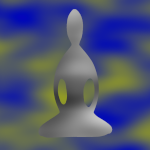Dear Friends,
There are many ways to practice meditation. Over the course of this month, we have started very with a narrow focus (breath) and have widened the scope of possibilities to invite the inclusion of body sensations, hearing, the flavor (pleasant thru unpleasant), thoughts and emotions. We have also invited some more heartful practices of kindness, compassion, joy, and equanimity. If you work with different teachers and in different traditions, you will find other practices too.
I have taken several online programs taught or organized by Diana Winston, the Director of Mindfulness Education at the Mindful Awareness Research Center (MARC) at UCLA. For the past few years, she has been teaching what she calls the “Spectrum of Awareness,” which widens the focus of attention in different ways.

For example, when we started with focusing on the breath, we were doing what Diana would call a Focused Awareness Practice. Our intention there is to stay on the primary object (breath) – the attentional focus is fairly narrow. When we notice that the attention is not on the breathing, we gently return to that object of focus (applying some effort to return to the primary object). And we are attending to one specific object.
With a more flexible awareness, we can start widening the attention to allow more in the field – breath, body, sounds, thoughts, etc. When we notice the attention moves, we don’t have to bring it back right away, so the effort is less. And focus on a specific object becomes more diffuse. This is what many teachers might call Choiceless or Open Awareness. We cultivate spacious, sky-like attention and observe the phenomena moving through. We may bring in practices like RAIN to inquire about the changing nature of experience.
The Natural Awareness that Diana describes turns awareness to awareness itself. Experience rises and falls within awareness. The attention is very broad. The mind rests in a place of ease. There is no focus on the specific objects.
We can weave in and out of any point on the spectrum. One style isn’t “better” than the others. You may find that you tend to gravitate more to one style than the other, or there may be certain times where a style feels more appropriate given the circumstances. It helps to know there are options, and to sense into what is the most useful and helpful in the moment.
For example, I mostly practice with the focused attention. During a typical day, my mind gets pulled into so many directions – juggling multiple projects at work, tending to the dogs and home responsibilities, etc. So the invitation to rest with one object is a relief. I don’t have to decide what to attend to. I don’t have to juggle a zillion things. Just this breath.
From focused attention, we can broaden the attention a little bit such that when we notice that we are no longer with the primary object, we can notice and inquire into what took us from the anchor before returning to the primary object.
With open or choiceless awareness, we no longer focus on an anchor. We allow the focus to move to whatever is most predominant in the moment. Hearing. Tingling. Stretching. Worry. Pulsing. Coolness. Thinking. Hearing. Planning. Joy. … (I like to include soft mental notes like this as part of this practice, to help me keep more attentive and not get too distracted.) If we find we get too scattered then we can direct the attention back to an anchor, and once we feel more settled, open the attention to whatever arises.
What Diana calls Natural Awareness is attuning to the quality of awareness itself. It’s hard for me to put into words. I also find that when I “try” to be aware of awareness that it just disappears, so for me, the conditions have to be right. Diana’s recent book, The Little Book of Being: Practices and Guidance for Uncovering Your Natural Awareness, goes into this style in more detail. The book includes little “glimpse” practices to give daily life tastes of this too.
In 2019, I had the opportunity to do a week long retreat with Susie Harrington, where over the course of the week we moved from a very focused attention to the broader awareness of awareness. This worked for me because I was able to get really settled, and then from that steady foundation, it was easier for me to access awareness without getting too spacey or strivey. So if you don’t feel like aren’t getting it right now, it’s not a problem, it just might be that the conditions aren’t optimal for you. Just play with it and see.
Speaking of which, if you are interested in playing with Diana’s spectrum of awareness, there is a recording from February 2020 where Diana leads a 30 minute practice that tours through the spectrum, and then she gives some more detailed instruction and mini practices, including answering questions from people who had connected to the live presentation.
https://sangha.live/dharma-library/the-spectrum-of-awareness-practices-2/
(There were some questions from an Andrea – that wasn’t me.)
Do you have a particular style that resonates with you? Do you notice that some style works better at certain times? Let me know!
With good wishes,
Andrea
